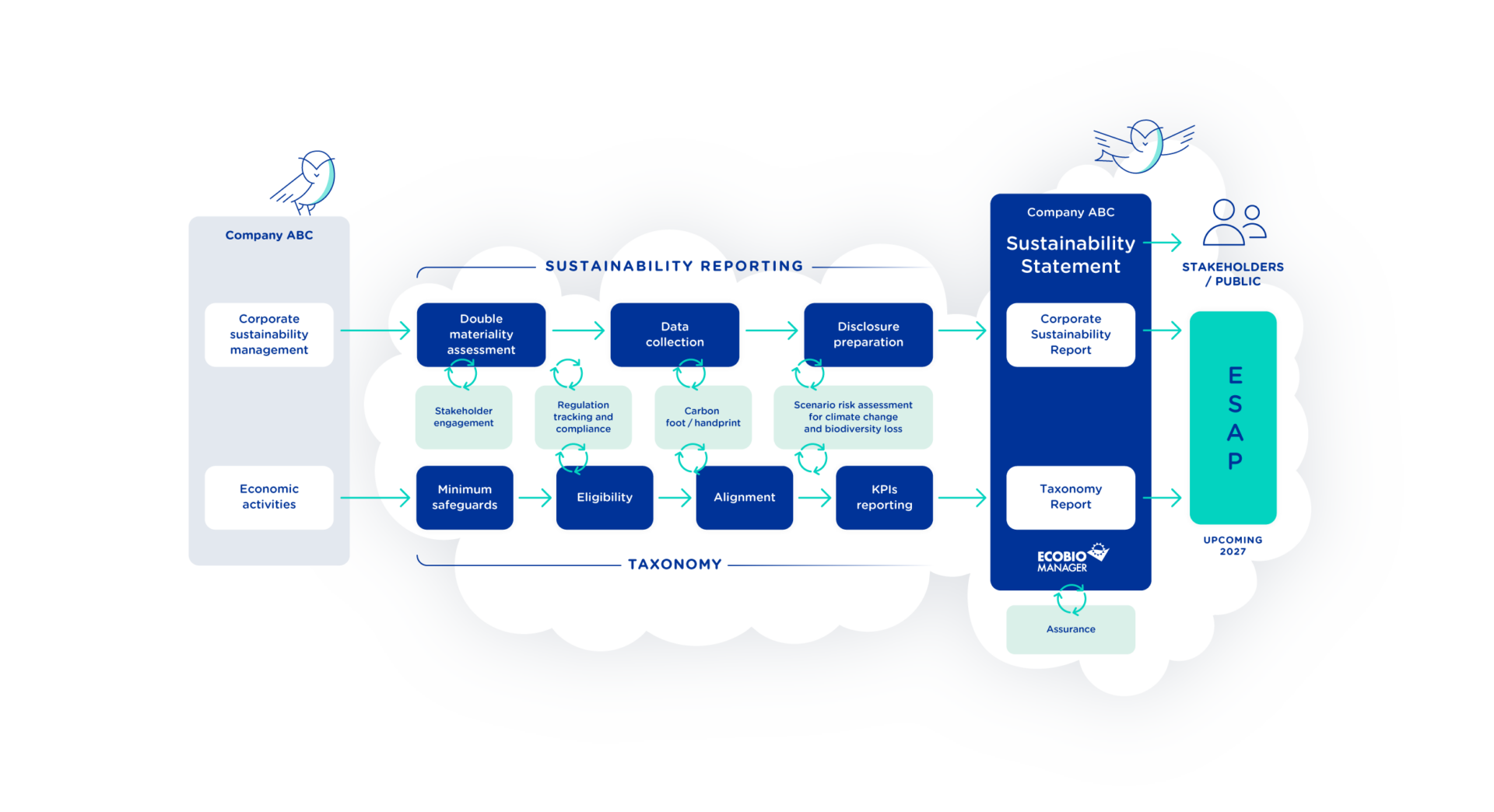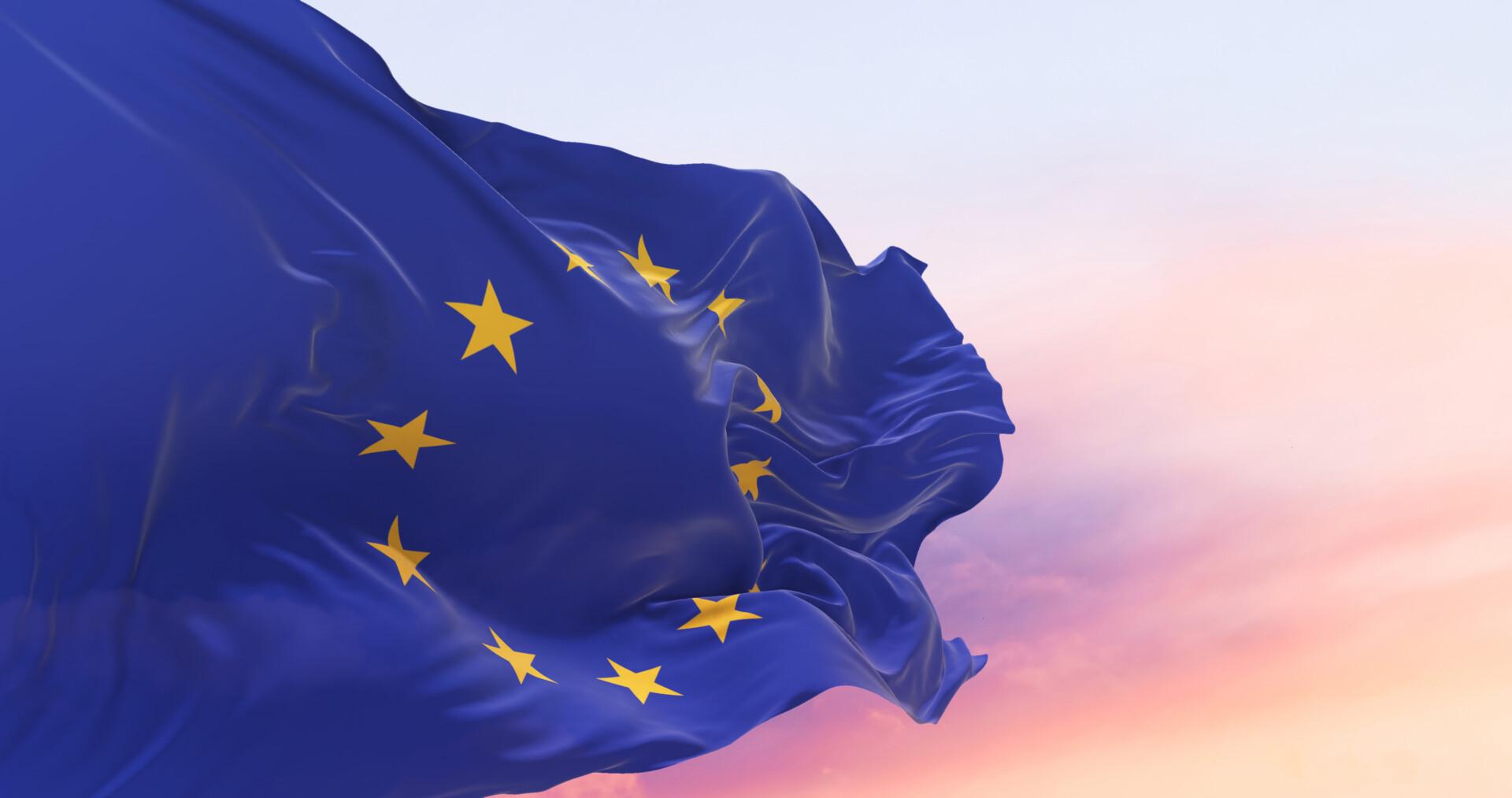
The Role of Digitalisation for CSRD
For CSRD reporting to be successful, digitalisation is a must! The European Union is entering a new digital era. In 2022, the EU established a new policy program called the Digital Decade 2030. The program empowers businesses and individuals to create a human-centred, sustainable, and prosperous digital future. One of the program’s goals is to improve businesses’ digital capabilities, impacting sustainability reporting.
Digitalisation for CSRD and the EU Green Deal
The EU introduced the Corporate Sustainability Reporting Directive (CSRD) to encourage companies to operate more sustainably and provide transparent and comparable information on their sustainability performance.
Implemented in 2020, the EU Taxonomy complements the CSRD by providing a standardised way to categorise economic activities as environmentally sustainable. Together, these two initiatives form key components of the EU Green Deal.
The Green Deal aims to transform Europe into a modern, resource-efficient, competitive economy. It seeks to achieve zero net greenhouse gas emissions by 2050 and decouple economic growth from resource use through digital means. This transition involves digitalisation to enhance business efficiency and reduce carbon footprint.
Digitalisation for CSRD and EU Taxonomy is the key
The CSRD directive will revolutionise how companies report, shaping a more sustainable future. By 2025, major listed companies must compile a CSRD report. Sustainability reporting strives to offer stakeholders transparent and comparable data on companies’ sustainability efforts, guiding investments toward sustainability. This valuable information will be easily accessible to stakeholders through the ESAP database, fostering informed decision-making for a brighter, greener world!
The CSRD will impact up to 50 000 businesses in Europe, making digitalisation a crucial part of the twin transition. Companies’ financial reporting is already primarily digital, and this will increase with CSRD. Digitalisation will improve the efficiency and accuracy of reporting across the value chain by automating data collection and processing.
Digitalising sustainability reporting helps companies generate profits. The collected data can be transformed into a product and, for example, offered to customers as an extra service. The speed at which the data moves around the globe allows for real-time tracking and analysis, enabling better decision-making.
Digitalisation plays a key role in standardising environmentally sustainable economic activities in the EU taxonomy. Digital tools can automate assessing and categorising these activities based on EU taxonomy criteria while also improving the accessibility of information for investors and stakeholders.
EU:s digital ecosystem for CSRD-reporting
Transitioning into a digital Europe is a thrilling and significant challenge with real-life complexities. The European Union’s twin transition -concept promotes digital transition alongside with the transition to sustainable economy and thus also advances achieving sustainability reporting goals through digitalisation. According to the EU’s plans, companies’ sustainability information, as outlined by CSRD and the EU Taxonomy, will be readily accessible to the public through ESAP, the European Single Access Point. To achieve this, the sustainability report must be electronically tagged.
Power of digitalisation for compliant CSRD Reporting
To overcome the digitalisation of CSRD reporting, companies need unified reporting software to collect information from various systems onto a single platform. A comprehensive solution will make tagging digital and reporting a breeze. CSRD mandates a digital approach from the beginning, rendering manual efforts obsolete. Achieving CSRD requirements without specialised software is impossible. Enter Ecobio Manager: Your solution for seamless electronic tagging and ESAP delivery.

Streamline CSRD Reporting with Ecobio Manager
Ecobio Manager is a thorough solution for CSRD sustainability reporting. It encompasses double materiality assessment, taxonomy classification, data collection, sustainability statement preparation, assurance, and streamlined delivery to ESAP. Designed by sustainability experts, Ecobio Manager ensures compliance with CSRD and ESRS standards, streamlining the reporting process.
Benefits of using CSRD software
To learn more about the benefits of a digital software for CSRD reporting, we have compiled a list of ten key points for you! You’ll be able to download the PDF below.



